Hydrangea tree "Anabel": description, planting and care
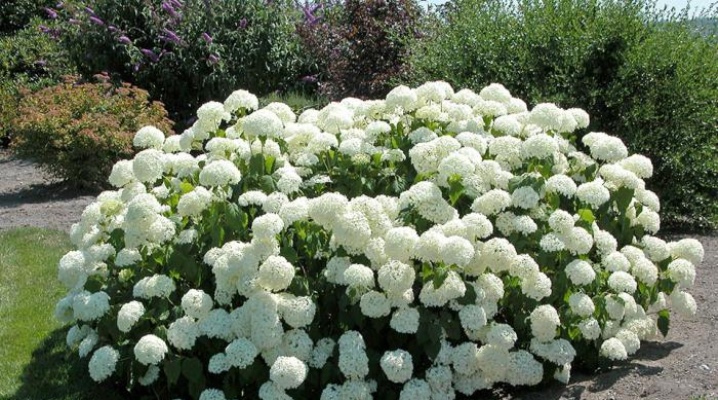
Perennial garden flowers are an indispensable decoration for any vegetable garden and private house: they are resistant to bad weather, tolerate cold well and have strong immunity against many diseases. In this article you will get acquainted with the peculiarities of growing hydrangea tree-like "Anabel".
Peculiarities
Today, this plant can often be seen in the landscape design of modern private houses or in the design of decorative outdoor courtyards. Treelike hydrangea "Anabel" is a dome-shaped deciduous shrub that is grown exclusively for decorative purposes.
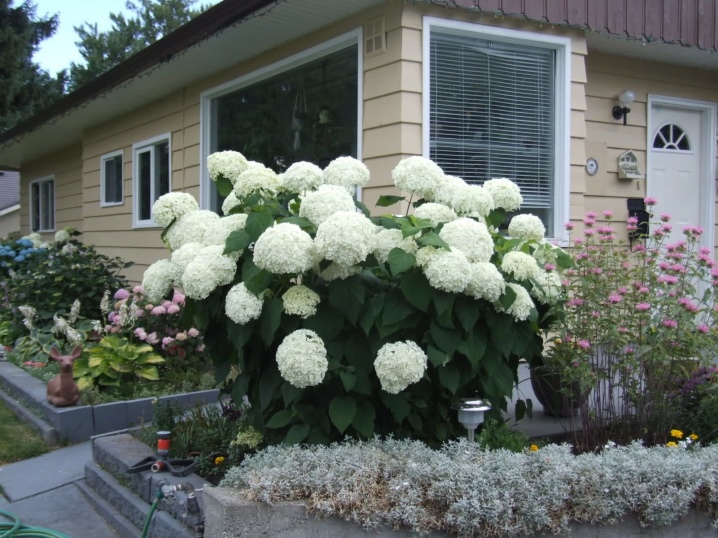
The tree hydrangea Annabelle is relatively large (wide). The height of the plant, depending on the variety, can reach 1.5 meters, and the width - up to 3 meters. The leaves of this plant have a soft and light structure, the most common color is deep green or emerald. There is no gloss on the leaves. The shape of the leaves is oval, the tips are pointed. The average length of the leaves is up to 20 cm. A large number of leaves and massive inflorescences form a lush, loose and spreading oval crown.
The plant blooms in June and ends in late September or early October. The flowers themselves in the plant are small - up to 2 cm in diameter, however, they form massive dense spherical inflorescences up to 20 cm in diameter. Shades of flowers at the beginning of flowering are pale green, with maturation the inflorescences acquire a soft creamy or white color.
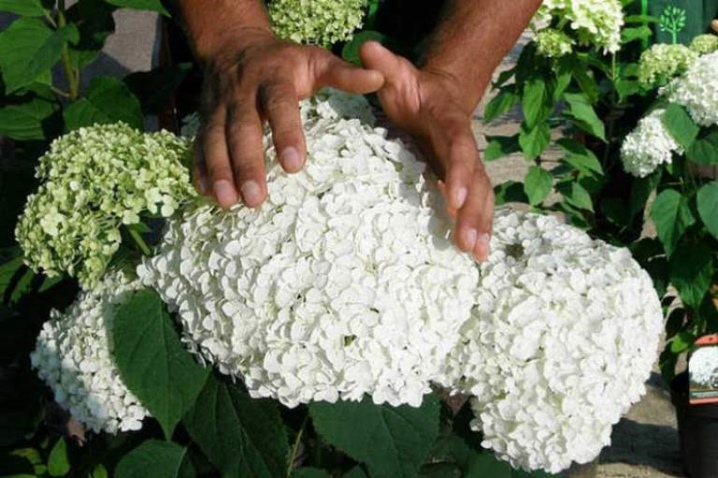
Hydrangea tree-like "Anabel" is known for excellent growth rates. In fertilized, healthy and prepared soil, a plant can grow up to 20 cm in height in one season. It is one of the few garden perennials that can withstand extremely low temperatures (down to -30 degrees Celsius) and unfavorable weather conditions without any problems. Such quality as frost resistance makes it possible to plant this flower in northern latitudes with short summers and long winters.
This type of hydrangea, with proper care, can live up to 50 years and constantly delight you with annual flowering.
The most popular today are two varieties of hydrangea tree-like "Anabel": Strong Annabelle (with white flowers) and Pink Annabelle (with pink inflorescences). Some owners add certain dyes to the soil to obtain inflorescences of certain colors.
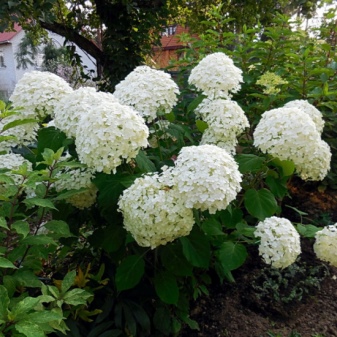
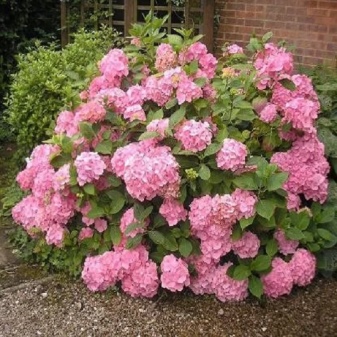
How to plant?
Before planting the Anabel hydrangea bush in open ground, you should decide in advance on a suitable place for the healthy growth of the flower. Keep in mind that the shrubs of this hydrangea can be successfully grown both singly and as a hedge.
Hydrangeas, regardless of their variety, do not tolerate constant moisture, dampness or cold air, and therefore they should be planted in a dry but well-ventilated place. Make sure that the flower is not under strong gusts of wind in the new location.
The site is best suited where the plant on one side will protect the fence, house or extension.
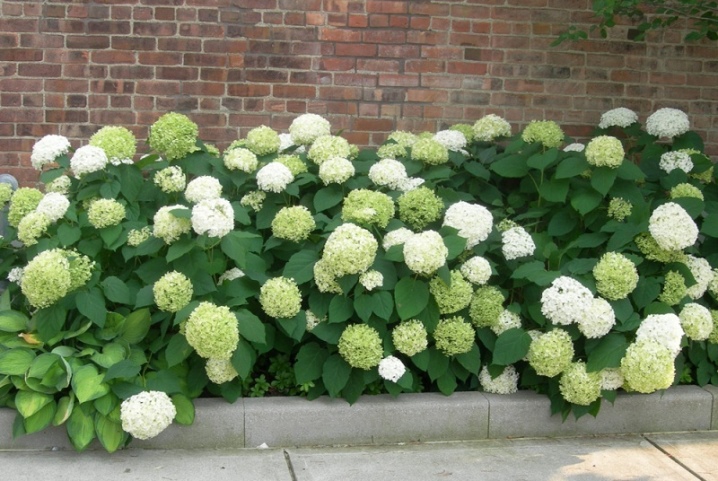
The landing site should have a stable average humidity level. Stagnation of water at the roots of the plant should also not be allowed - this will lead to their rotting. Avoid planting in low areas where moisture constantly accumulates after rain.
Lighting should not be direct, but diffused - too intense sunlight can harm the leaves and flowers of the plant. The best option would be where the plant will be under the sun in the morning or evening, and remain in the shade at noon and until the evening.
When planting hydrangea "Anabel" on open soil, a lot depends on the quality and type of soil. This shrub prefers to grow in slightly acidic soils. If your soil is rich in alkalis (chalk or lime, for example), the plant will not be able to fully develop and may well die. These substances inhibit root growth, which leads to crown deformation and leaf fall. If you have alkaline soil on your site, peat, sand, sawdust and sod should be added to the bush planting hole in equal proportions. Keep in mind that the plant will need constant feeding for full development in such soil.

A site should be found where large plants or trees do not yet grow. Otherwise, they will take all the moisture it needs from your hydrangea.
The planting itself will be best done in the spring - in late April or early May (depending on weather conditions). This is necessary so that the plant has time to acquire a strong root system before the onset of the winter cold. Hydrangea bushes 2-3 years old are best suited for planting. If we are talking about growing this shrub in cold regions, for example, in the Urals, then it is better to shift the planting time to the first months of summer.
The planting process of hydrangea tree-like "Anabel" is as follows.
- Before planting a plant in the soil, be sure to disinfect its root system. To do this, it will be enough for a short time to place the roots of the plant in a solution of potassium permanganate.
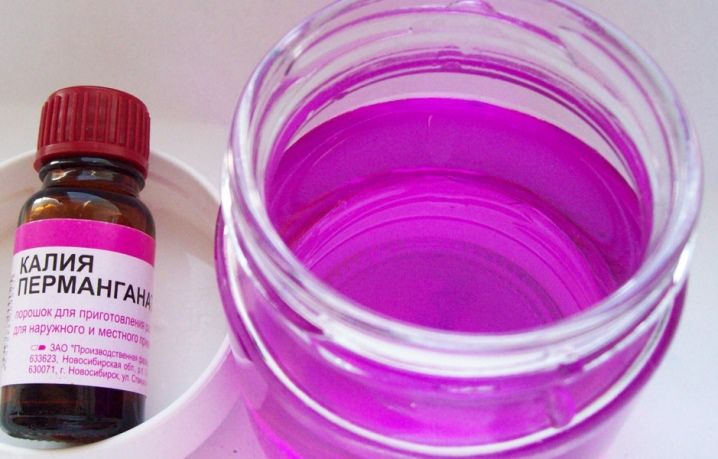
- After choosing a specific place for planting, dig a hole in the ground measuring 40 by 40 cm.The depth should be at least 50 cm so that the roots of the plant can fully develop after planting in new soil.
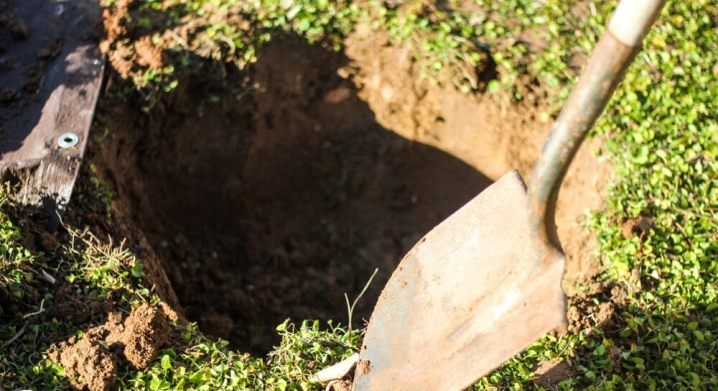
- If the selected site has infertile or poor soil, prepare the previously purchased soil for planting the plant. It is best to dwell on the purchased options, since they are likely to be free of parasites and fungi.
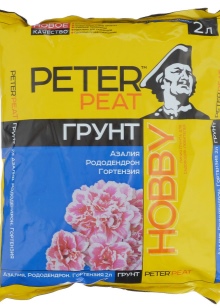

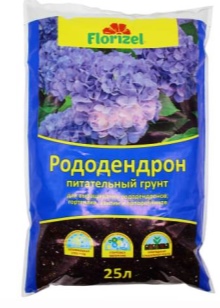
- If the selected site is located in a lowland, the pit should be provided with a drainage layer of sand and gravel.
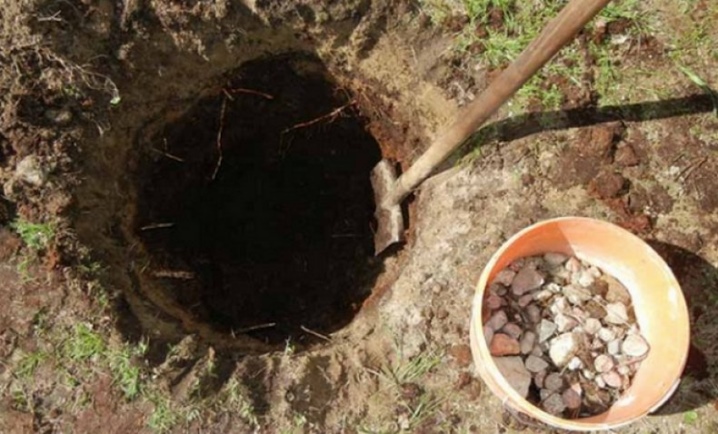
- Gently spread the roots of the shrub along the bottom of the hole, then cover with prepared soil. The root collar (the top of the root system) must remain above the ground. Use a shovel to lightly compact the soil around the plant.
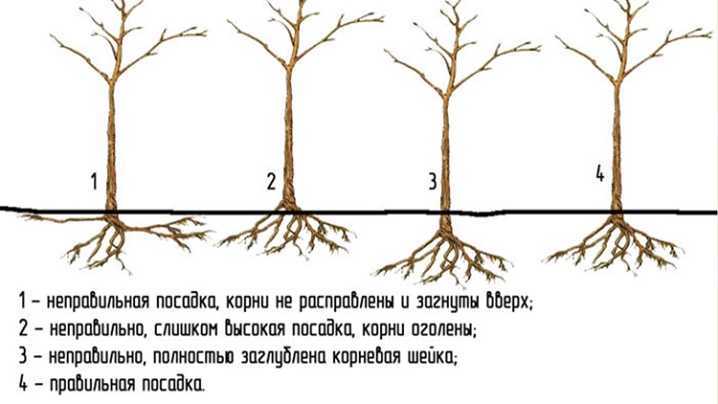
- Use 1-2 buckets of water to water the plant. Almost immediately, the trunk circle should be filled with a mulch mixture, which will not allow moisture to evaporate and create a favorable microclimate for the roots of the plant.
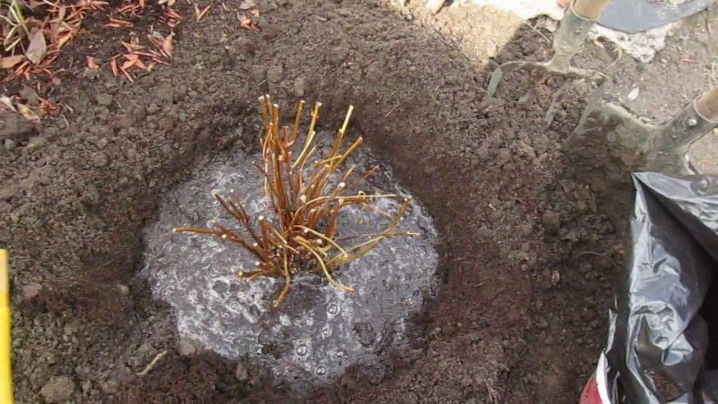
- If you want to plant several hydrangea bushes and create a hedge, plant the plants 1.5-2 meters apart. Remember, the Anabel hydrangea is not very tall, but it has an extremely voluminous and spreading crown.
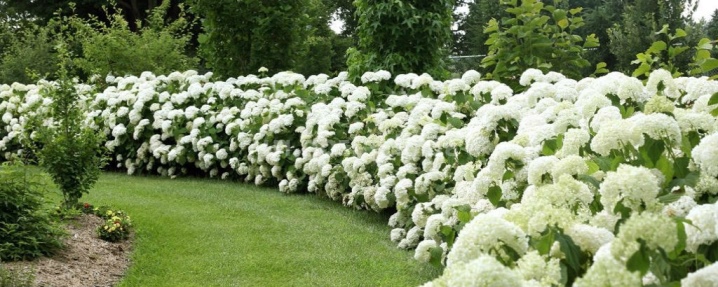
How to take care of it properly?
Caring for the hydrangea "Anabel" should not cause difficulties even for inexperienced gardeners. Almost all plant care comes down to proper pruning and watering.
If we are talking about only planted hydrangea "Anabel", then watering should be carried out at least once every 2 days. To do this, use at least 1 bucket of cool water. In order to prevent the soil from completely drying out at the plant's trunk, mulching can be used (a layer of at least 8 cm thick). A layer of mulch will not only retain moisture, but also prevent weeds and other plants from growing in the near-stem circle.
As soon as the shrub takes root and begins to grow actively, the amount of watering should be reduced.
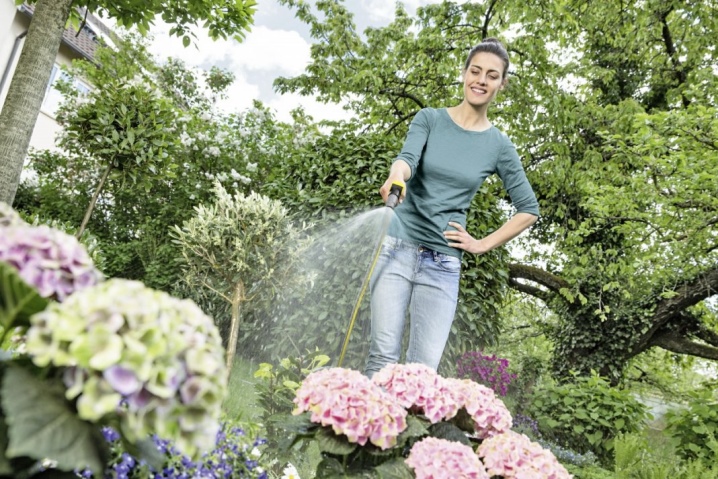
To feed the hydrangea "Anabel", you should use a mixture of mineral-organic fertilizers, but you should avoid feeding the plant with ash or lime. If we talk about mineral fertilizers, then potassium nitrate, urea and superphosphate will show themselves best here. Also, you can always buy fertilizers specifically for hydrangeas.
The very first feeding should be done before the start of the growing season. As a rule, these are phosphorus and potassium fertilizers, which stimulate the active growth of shrubs and shoots. The second top dressing also includes phosphate and potash fertilizers. It should be carried out as soon as the plant begins to form inflorescences.
As a preventive measure, it is recommended to spray the shrub with a pink solution of potassium permanganate twice a year. For tree hydrangea, this is a vital procedure, as it strengthens the stems of the bush, which can break under the weight of the buds.
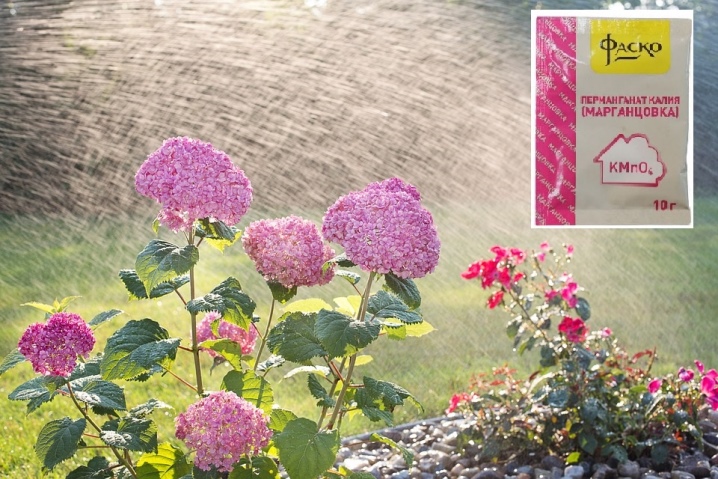
Prune the hydrangea "Anabel" at least 2 times a year (in spring and autumn). Pruning is carried out both for preventive purposes (to remove dry, broken and diseased stems and branches) and in decorative (allows you to form a crown). Preventive pruning should be done prior to the growing season. In addition to diseased shoots, branches are removed that impede natural ventilation inside the crown. To make the plant look neat, you can shorten the longest branches and shoots - this stimulates the growth of lateral shoots and makes the plant thicker. In autumn, pruning is carried out after flowering, all dried buds are removed, as are the 2 uppermost buds.
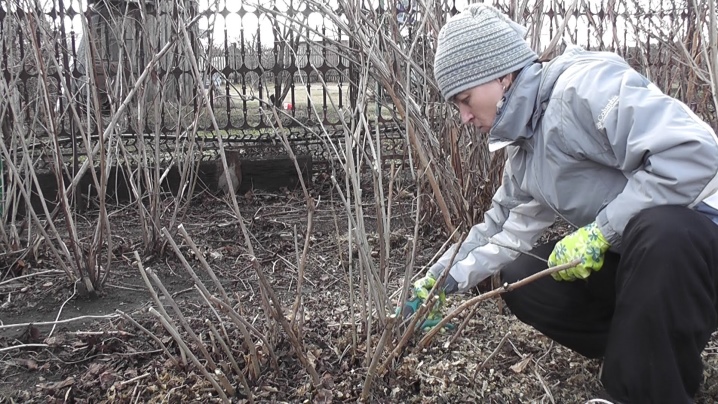
Reproduction methods
Today, there are only 3 ways of reproduction of hydrangea tree-like Annabelle: cuttings, branching and dividing the bush. Most often, it is cuttings that are used - it takes the least time and is within the power of every gardener.
Cuttings
Cuttings should be harvested in the spring - preferably in April, when preventive pruning of garden plants is carried out. Cuttings from the tops of the crown of a shrub, always from young shoots, are best suited for reproduction. They should be fresh, green and not painful, no more than 15 cm in length.
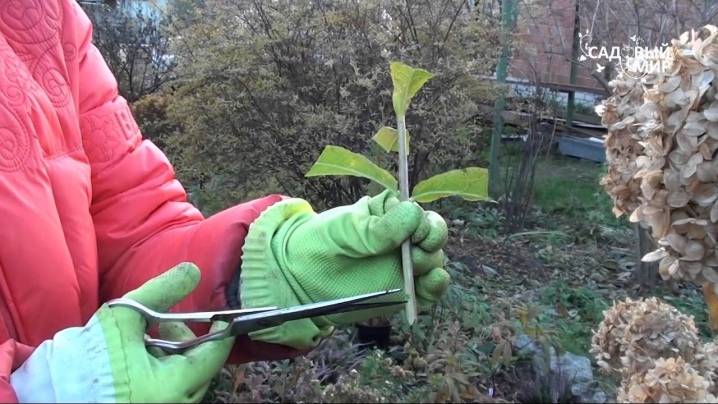
After selecting the cuttings, plant them in a spacious container with pre-prepared and moistened soil. For the full development of cuttings, the soil should include peat, sand and humus (in the same ratio). Prepared cuttings are placed in a container at a distance of at least 25 cm from each other. After that, it is covered with a translucent film to create a pleasant microclimate.
In this state, the cuttings will develop and grow for at least 1.5-2 years. During this time, you should maintain a favorable moisture level in the container. The film can be removed as soon as the plants take root. Future hydrangeas can grow both indoors and outdoors, but the container should still be kept indoors during cold seasons.
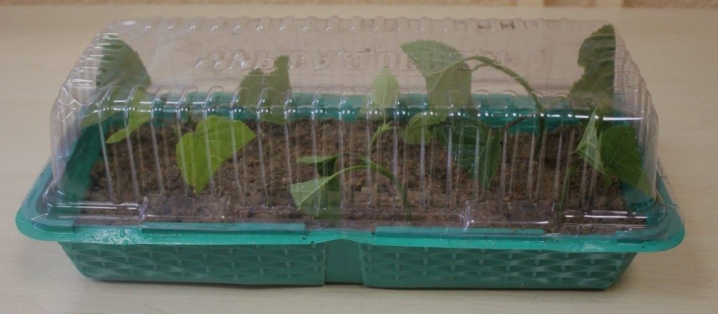
As soon as the plant can take root in the soil and acquire a strong stem, the next reproduction can be carried out. To do this, the lower long shoot is cut in the middle, buried in the place of the cut and fixed (with pebbles, for example). This procedure should be carried out in the spring, while the leaves have not yet appeared. By about autumn, the shoot should take root. It also costs about 2 years to grow it in a container, and only after that it can be transplanted from the mother plant to a new place.
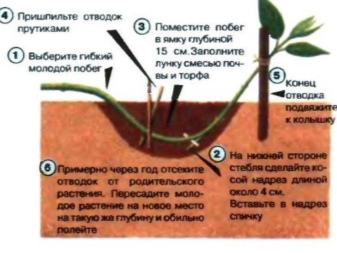
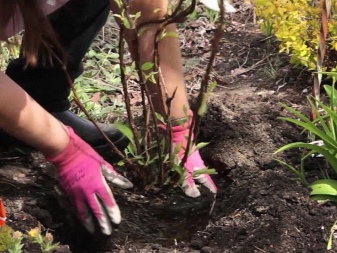
Removal of an adult plant
In the early days of autumn, you need to dig a small hole near an adult plant - from 5 to 10 cm, then choose one of the most developed branches of the plant, make an incision on it and lay it in the dug hole. After that, the shoot is strengthened with a hairpin, fertilized with nutritious soil, watered and insulated with a layer of mulch. This should keep the plant safe throughout the winter.
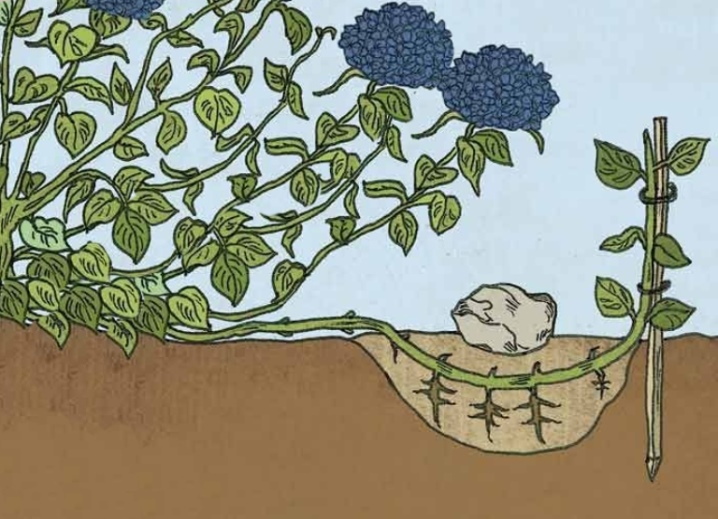
The method of reproduction through dividing the bush is practically not used today; it can be used only when transplanting a plant to a new place. Unfortunately, propagating the plant without harming the root system of the mother shrub in this case will not work.
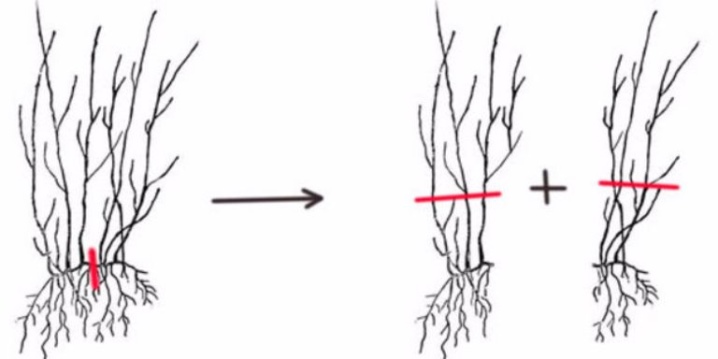
Diseases and pests
Despite the fact that almost all perennial garden plants are resistant to many diseases and pests, they are still susceptible to some.
Diseases and pests that gardeners have to meet most often on hydrangea bushes.
- Powdery mildew. This is a common fungal disease among all garden plants. From such a disease, hydrangea leaves are covered with a large number of white dots, which gives the impression that the leaf is covered with real cobwebs. From this disease, the leaves curl and then dry out. Powdery mildew is treated with fungicides - the affected areas of the crown are removed, and the whole plant is processed. Be sure to spray nearby plants to prevent the fungus from spreading to them.

- Gray rot. A dangerous fungal disease that destroys not only the leaves of the plant, but also the cuttings, which are responsible for the reproduction of the shrub. The disease can be recognized by local lesions of the leaves of the plant with gray, as if dusty fungi. The plant should be treated in the same way - all diseased shoots should be removed, and the plant itself should be sprayed with a fungicide.
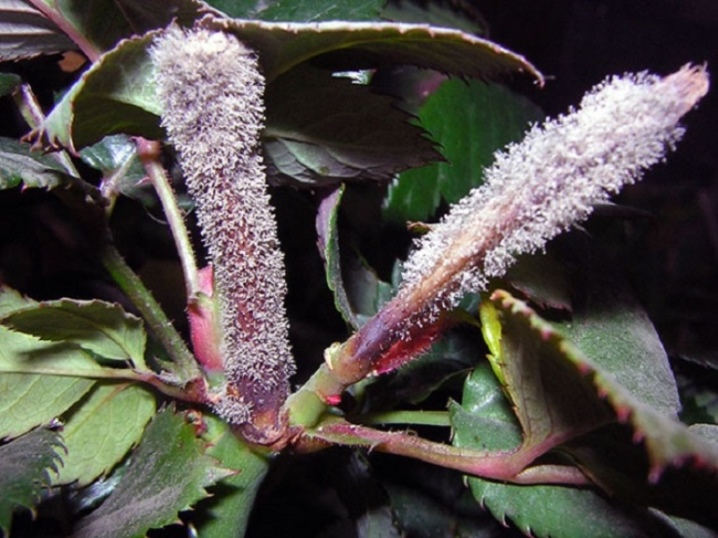
- Ring spot. This viral disease can be found very often on crops such as grapes, raspberries, gooseberries and even garden flowers. The disease manifests itself in the form of numerous dark dry spots on the leaves of the plant, which grow over time and destroy the leaf. The reason for the appearance of the virus is most likely a poor-quality or already infected soil or poorly processed tools. In addition, the insects themselves can infect the shrub with this disease. Unfortunately, this disease cannot be cured in any way - the plant will have to be destroyed.
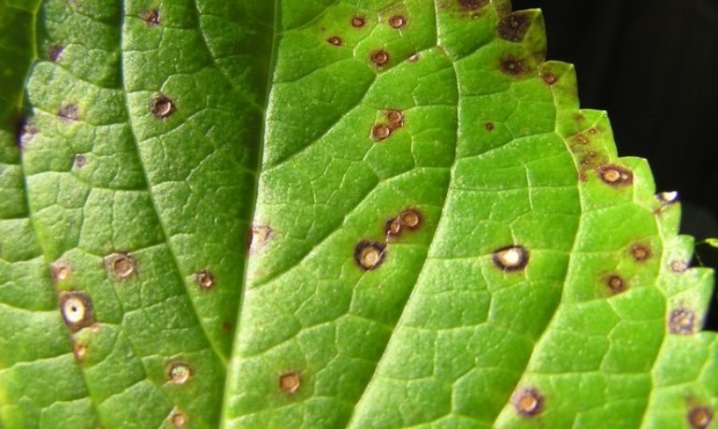
- Chlorosis. Some gardeners confuse this disease with a banal excess of sunlight - the leaves of the plant begin to lose color and gradually turn yellow. This disease is due to the fact that your shrub lacks iron. For treatment, fertilizers with iron in the composition are added to the soil of the plant.
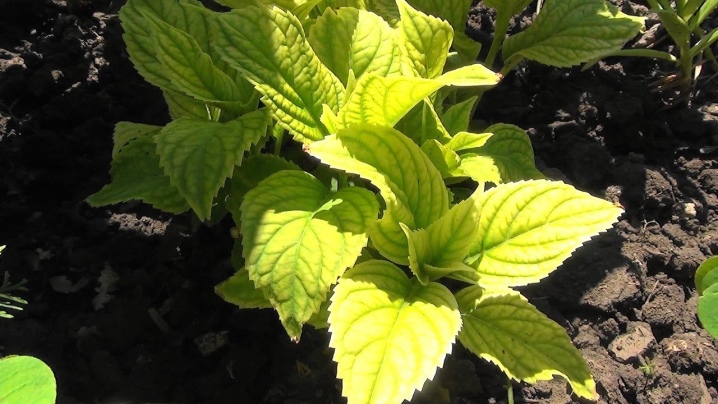
Unfortunately, the hydrangea "Anabel" can be affected not only by certain diseases, but also by pests.
- Leaf aphid. This is a classic pest in all private gardens. In huge quantities, it infects local areas of the plant and drinks from them all the nutritious juices. Over time, the affected bushes dry out and turn black. If the pests are in a specific place in the bush, ladybugs can deal with them. If pests are observed throughout the entire crown of the plant, insecticide treatment is necessary.
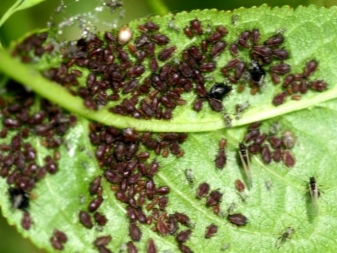
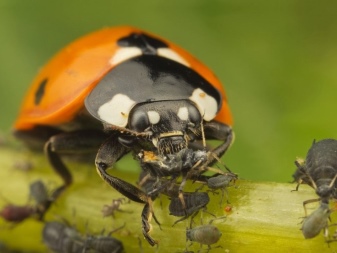
- Spider mite. This pest can be easily detected by the characteristic cobweb with which it braids the affected areas of the plant. Because of the cobweb, the bush does not receive the necessary light and nutrients, which is why it simply does not bloom. As a treatment, it is necessary to clean the plant from the pest and apply insecticides to the affected areas.
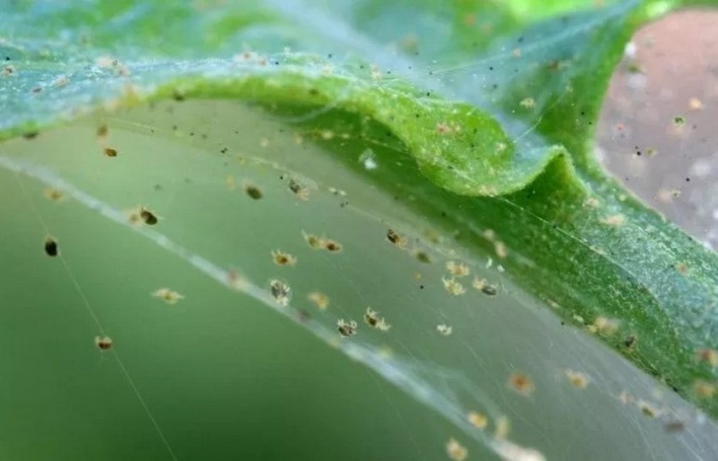
- Slugs and snails. Many gardeners consider them not particularly dangerous pests, however, in large quantities, these insects can cause significant damage to the plant. They prefer to get rid of them manually. Some experts use a special molluscicide to destroy these particular pests.
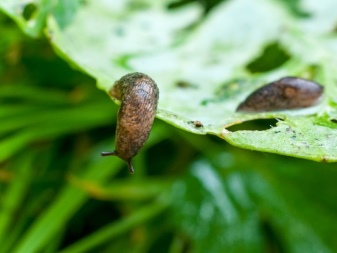
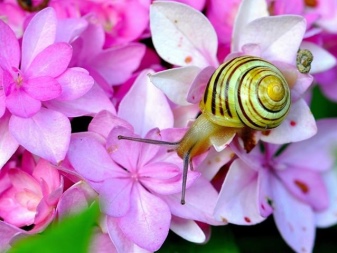
The best treatment for each garden plant will be a timely detected disease and competently provided assistance.
Use in landscape design
In modern summer cottages and gardens, the tree hydrangea "Anabel" can be planted both singly and together with any flowers or shrubs. In modern landscape design, it can be found in a variety of designs.
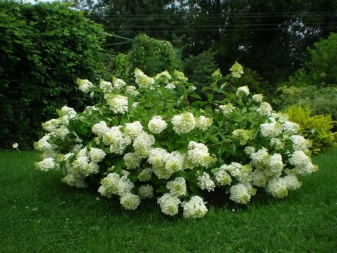
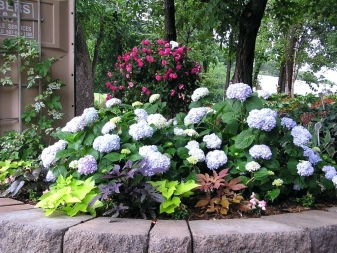
Some growers prefer to plant hydrangeas along garden paths, while others use shrubs to create hedges between the beds. Hydrangea "Anabel" can look great both in the open field and displayed in large containers on the site.
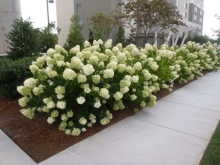
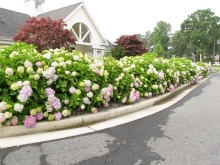
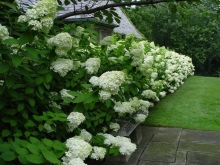
Ornamental garden plants such as incense or hosts, which also prefer shade and a large amount of moisture, will look harmonious next to this shrub.... Depending on the Anabel hydrangea variety, it can look good with conifers and other deciduous shrubs. Often, hydrangeas are used to create a spectacular backdrop for short and bright flowers.
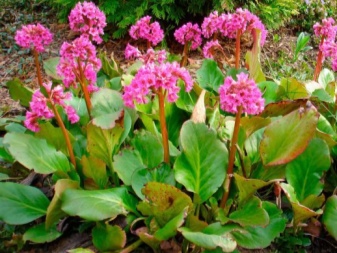
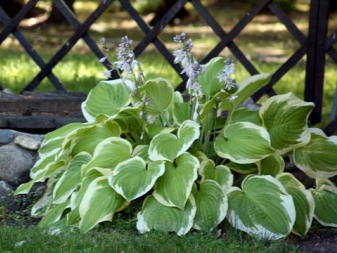
Due to the fact that the hydrangea "Anabel" is able to grow in one place for more than 40 years, it is often used to create a stable and unchanging appearance of the garden.
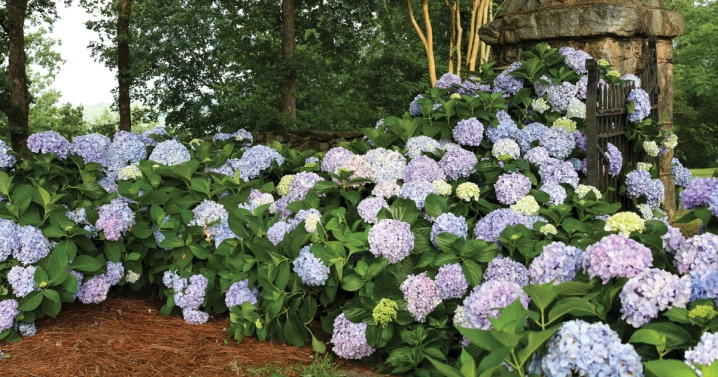
For more information on caring for tree hydrangea, see the next video.



































































The comment was sent successfully.